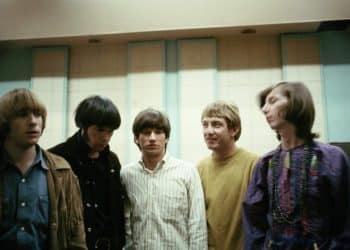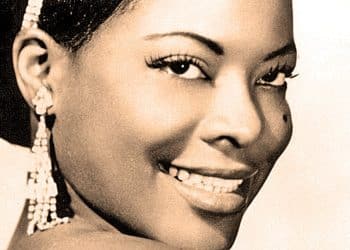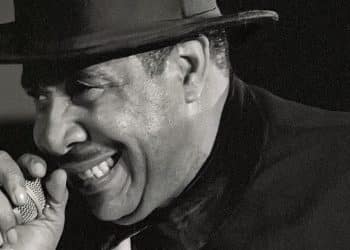Few voices in music history are as instantly recognizable and emotionally powerful as Linda Ronstadt’s. With a career spanning over four decades, she effortlessly crossed genres—from rock to country, pop to R&B, and even Latin music—proving that true artistry knows no boundaries. Whether belting out a fiery rock anthem or delivering a heart-wrenching ballad, Ronstadt’s voice has captivated audiences and influenced generations of musicians.
Her ability to take a song—whether a cover or an original—and make it completely her own is what made her a legend. From chart-topping hits to deeply personal ballads, her music resonates just as powerfully today as it did when it first hit the airwaves. With multiple Grammy Awards, platinum-selling albums, and a Rock and Roll Hall of Fame induction, Ronstadt’s legacy is undeniable.
In this list, we celebrate her 10 most popular songs of all time—the tracks that defined her career, dominated the charts, and remain fan favorites to this day. Whether you’re rediscovering her music or hearing it for the first time, these songs showcase why Linda Ronstadt is one of the greatest vocalists in history. Let’s dive into the magic of her music! 🎶
1. You’re No Good (1963, Ronstadt’s Version: 1974)
Originally recorded by Dee Dee Warwick in 1963, “You’re No Good” found new life when Linda Ronstadt reimagined it in 1974. Her version, featured on her breakthrough album Heart Like a Wheel, became an electrifying anthem of heartbreak and empowerment. With its moody, blues-infused arrangement, a dramatic guitar intro, and Ronstadt’s searing vocal delivery, the song transformed into an unforgettable classic. Her ability to seamlessly blend rock, country, and soul gave “You’re No Good” a fresh intensity, propelling it to the top of the Billboard Hot 100. The track not only solidified Ronstadt’s status as a powerhouse vocalist but also became one of the defining songs of her career.
2. Blue Bayou (1961, Ronstadt’s Version: 1977)
Originally recorded by Roy Orbison in 1961, “Blue Bayou” became one of Linda Ronstadt’s most beloved songs when she covered it in 1977. Featured on Simple Dreams, her version captures a deep sense of longing and nostalgia, painting a vivid picture of yearning for home. Her warm, emotive vocals, combined with the song’s dreamy arrangement, create a beautiful fusion of country and pop. The track became a massive hit, earning Ronstadt a Grammy nomination and securing its place as a timeless classic. The song’s soaring final chorus, filled with aching emotion, remains one of her most breathtaking vocal moments.
3. When Will I Be Loved (1960, Ronstadt’s Version: 1975)
Originally written and recorded by The Everly Brothers in 1960, “When Will I Be Loved” took on a new life in 1975 when Linda Ronstadt added her signature touch. Featured on Heart Like a Wheel, her version bursts with fresh energy, transforming the rockabilly tune into a bold declaration of frustration and resilience. With a driving beat, crisp harmonies, and Ronstadt’s unmistakable vocal power, the song reached No. 2 on the Billboard Hot 100. It became one of her biggest hits, further cementing her ability to cross genres effortlessly while maintaining her unique sound.
4. It’s So Easy (1958, Ronstadt’s Version: 1977)
Buddy Holly first introduced “It’s So Easy” in 1958, but nearly two decades later, Linda Ronstadt redefined the song with a sleek, rock-infused twist. Her 1977 version, featured on Simple Dreams, bursts with confidence and infectious enthusiasm. The track’s lively rhythm, punchy electric guitars, and Ronstadt’s effortless vocal control made it a radio staple. Her rendition climbed the charts, proving her skill in taking a rock ‘n’ roll classic and making it distinctly her own. The song’s energy and polished production turned it into one of her most memorable hits.
5. Different Drum (1967)
One of Linda Ronstadt’s earliest and most defining hits, “Different Drum” was originally written by Michael Nesmith and recorded by The Greenbriar Boys in 1966. However, it was Ronstadt’s 1967 version with The Stone Poneys that turned it into a folk-rock anthem. The song’s lyrics, about a fiercely independent woman refusing to conform to traditional relationship expectations, resonated strongly with the feminist movement of the late 1960s. With lush orchestration and Ronstadt’s clear, emotive vocals, “Different Drum” became the song that first catapulted her into the spotlight, marking the beginning of a legendary career.
6. That’ll Be the Day (1957, Ronstadt’s Version: 1976)
Buddy Holly and The Crickets originally recorded “That’ll Be the Day” in 1957, but Linda Ronstadt’s 1976 rendition brought a fresh, polished take to the rock classic. Featured on Hasten Down the Wind, her version retains the original’s rockabilly charm while infusing it with a smoother, California-rock style. The tight instrumentation, Ronstadt’s crisp delivery, and the song’s infectious melody made it a standout track. While staying true to Holly’s legacy, she added a modern twist that resonated with 1970s audiences, proving her ability to breathe new life into classic rock staples.
7. Poor Poor Pitiful Me (1976, Ronstadt’s Version: 1977)
Originally written by Warren Zevon in 1976, “Poor Poor Pitiful Me” took on a new energy when Linda Ronstadt covered it in 1977 for her album Simple Dreams. Her version injects a playful yet biting edge into the song’s wry, tongue-in-cheek lyrics about romantic misfortune. With a driving beat, crisp guitar work, and Ronstadt’s dynamic vocals, the song became a fan favorite. She delivered both humor and strength in her performance, proving her ability to take on a song with attitude and make it entirely her own. It remains one of her most celebrated rock tracks.
8. Love Is a Rose (1974, Ronstadt’s Version: 1975)
Neil Young originally wrote “Love Is a Rose” in 1974, but Linda Ronstadt’s 1975 version, featured on Prisoner in Disguise, gave it a bright, country-tinged twist. Her interpretation adds warmth and an upbeat energy, making it one of her most charming folk-country crossovers. The song’s simple yet poetic lyrics compare love to a delicate rose, and Ronstadt’s heartfelt delivery enhances its timeless appeal. Her version became a country hit, further showcasing her versatility in seamlessly blending genres and bringing a fresh perspective to Young’s songwriting.
9. Ooh Baby Baby (1965, Ronstadt’s Version: 1978)
Originally recorded by Smokey Robinson and The Miracles in 1965, “Ooh Baby Baby” was given a stunning reinterpretation by Linda Ronstadt in 1978. Featured on Living in the USA, her version slows the tempo slightly, allowing her voice to glide effortlessly across the song’s delicate melodies. The result is a breathtaking showcase of her vocal control and emotional depth. Her smooth, soulful delivery proved her ability to handle R&B with as much ease as rock and country. The song became one of the standout tracks of her career, further solidifying her reputation as a versatile and dynamic artist.
10. Heat Wave (1963, Ronstadt’s Version: 1975)
Originally recorded by Martha and the Vandellas in 1963, “Heat Wave” got a fiery rock update when Linda Ronstadt covered it in 1975 for Prisoner in Disguise. Her version takes the Motown classic and injects it with high-energy rock elements, featuring a fast-paced tempo, punchy electric guitar, and a powerhouse vocal performance. Ronstadt’s electrifying delivery and the song’s infectious rhythm made it an instant fan favorite. Her ability to seamlessly blend rock, soul, and pop on this track showcases her remarkable adaptability as an artist, turning “Heat Wave” into a thrilling reinvention of a beloved classic.









